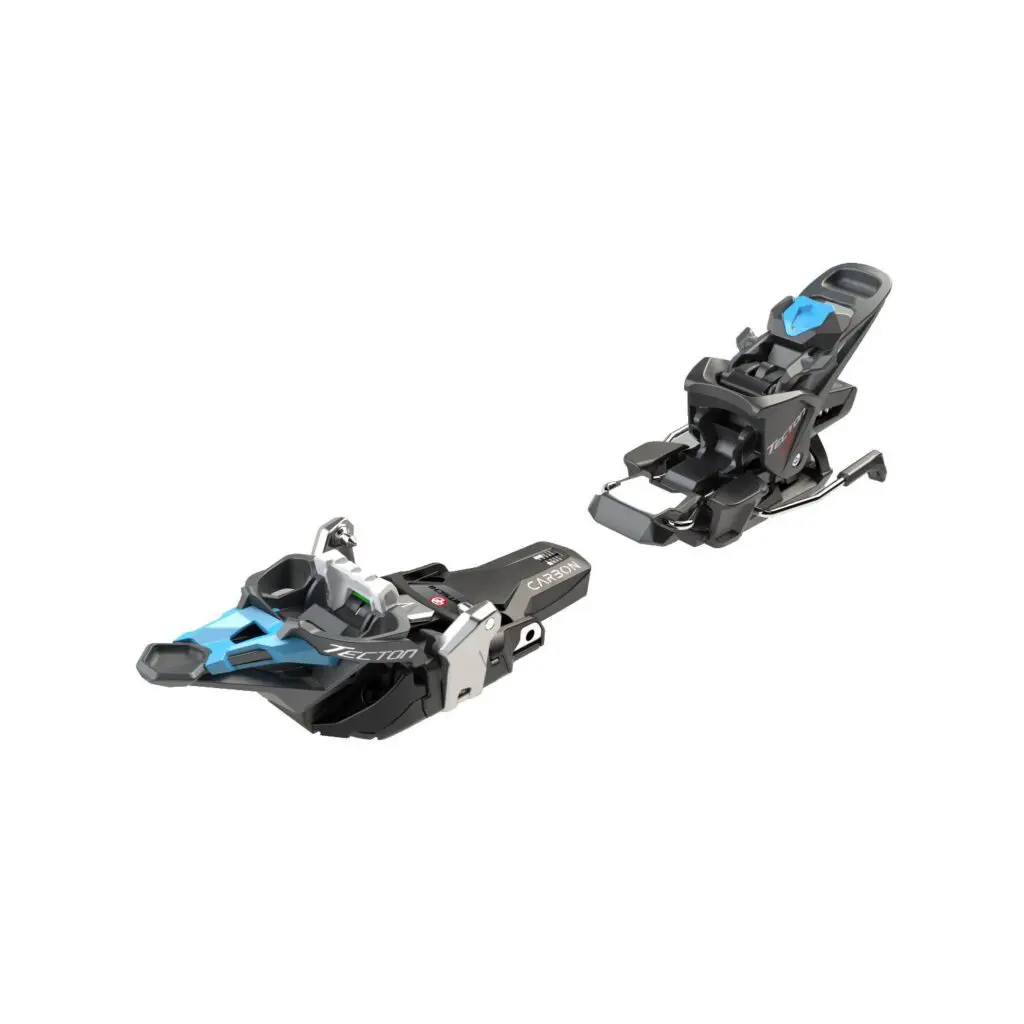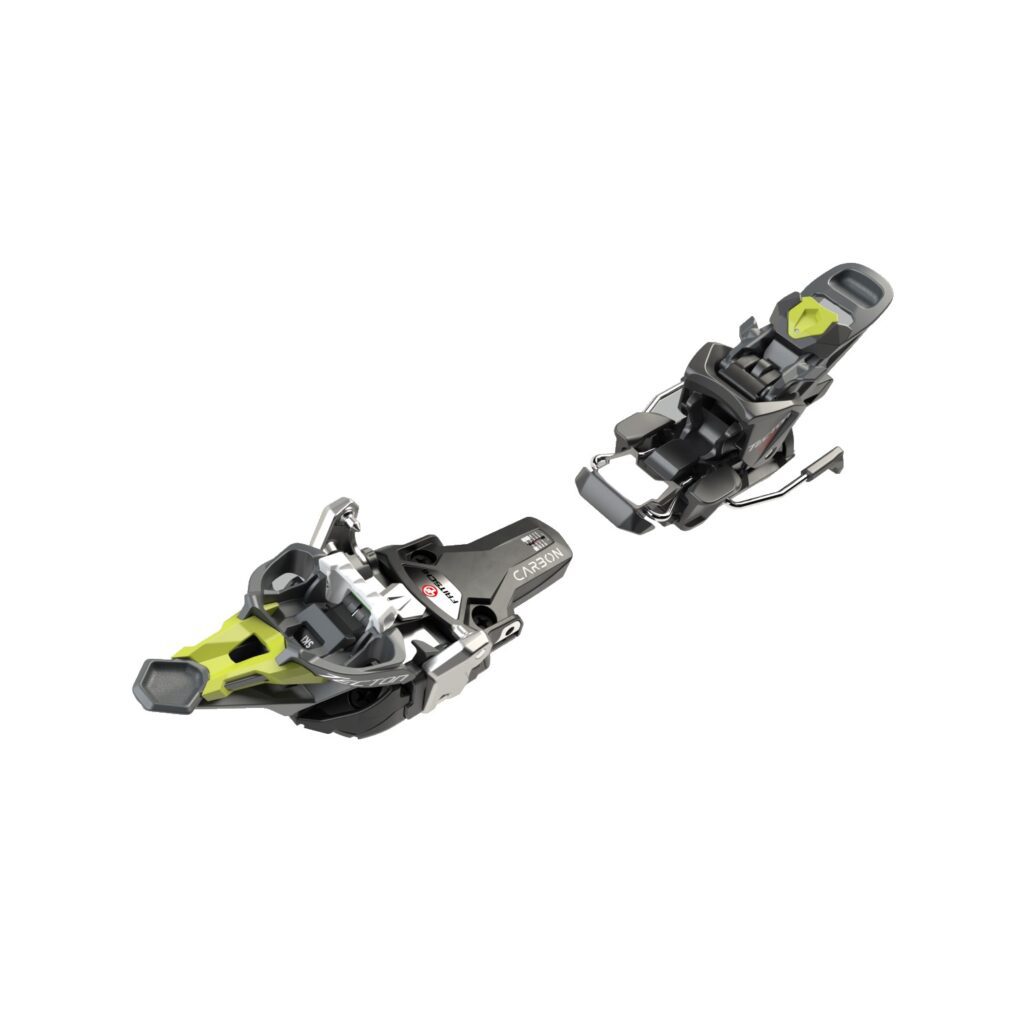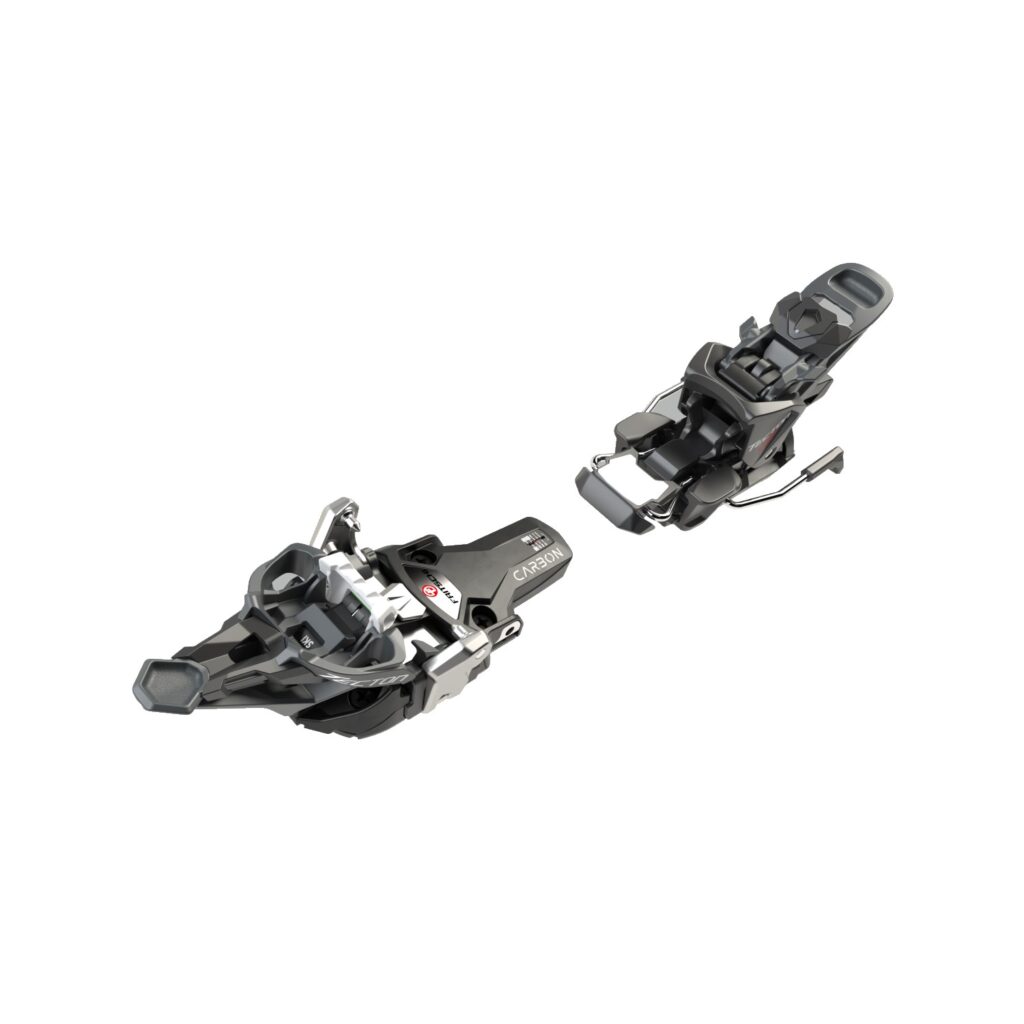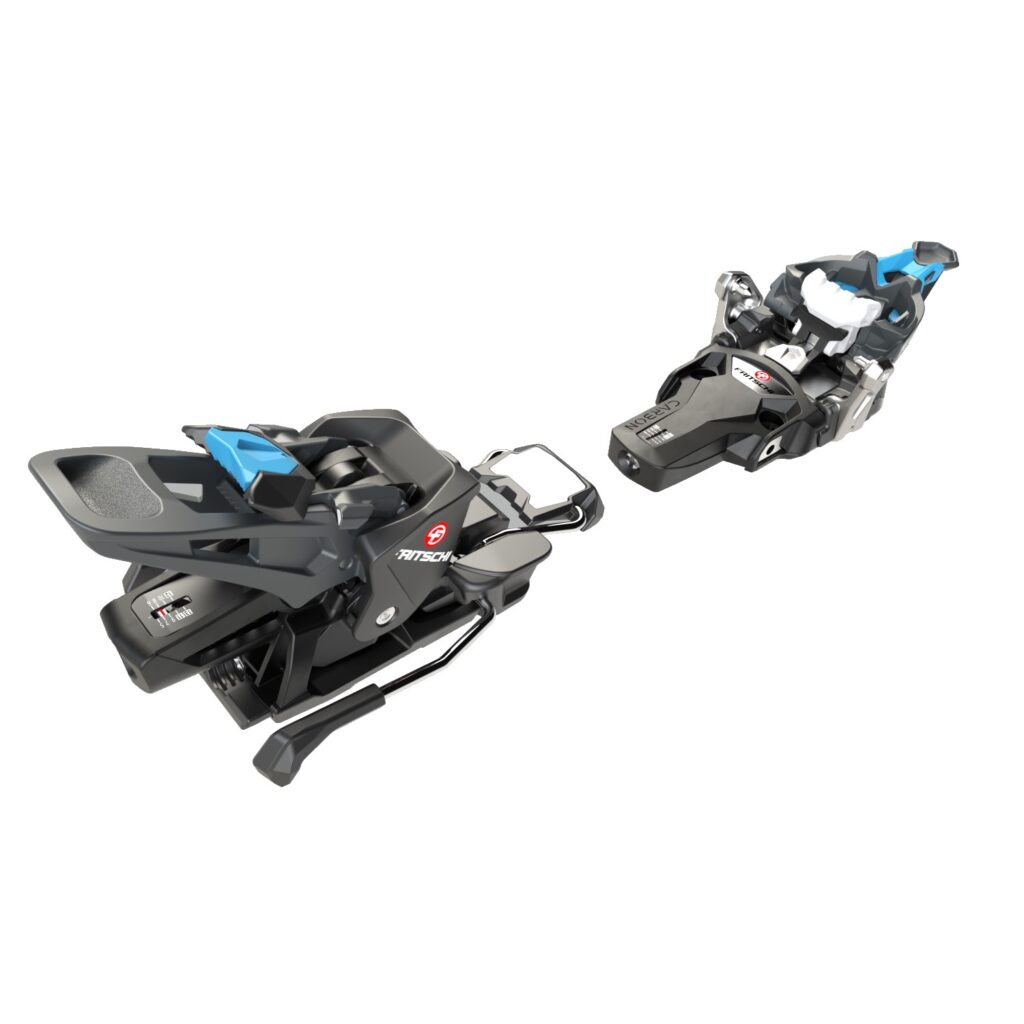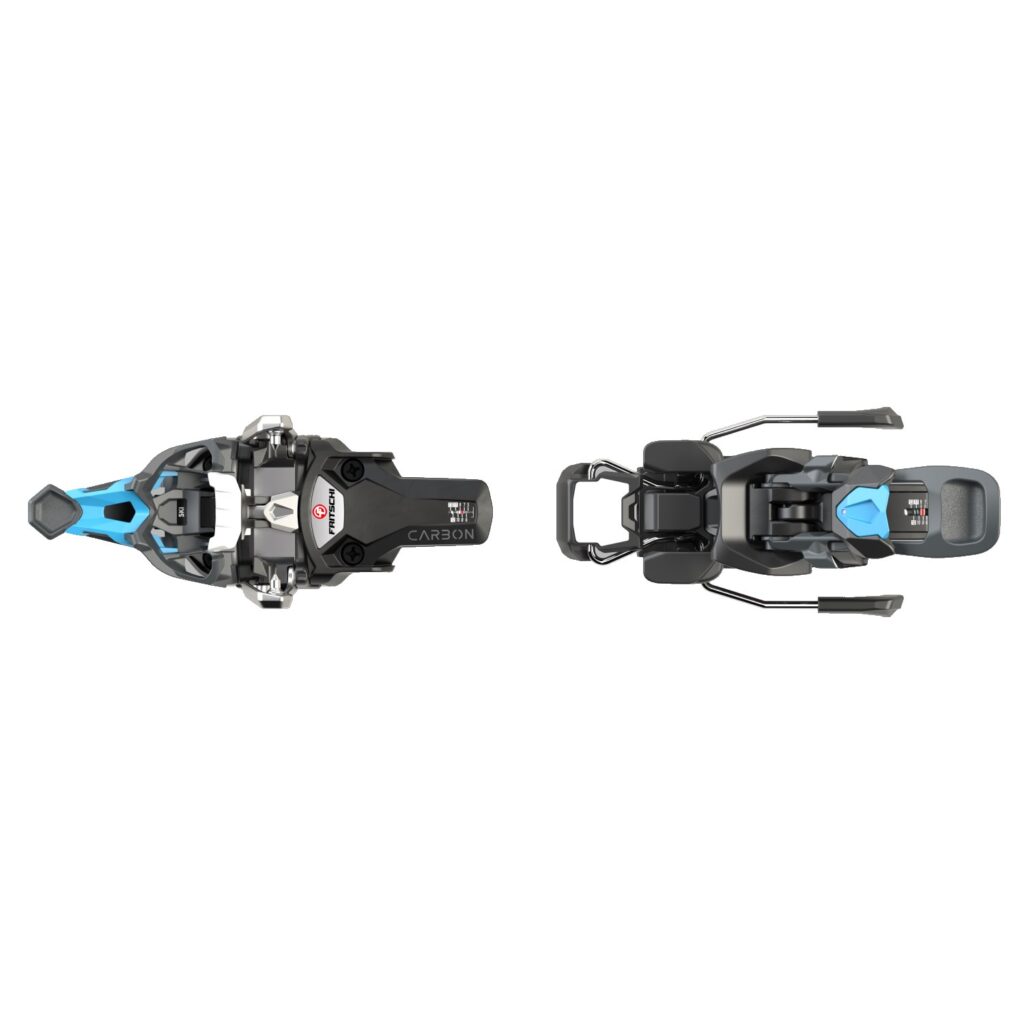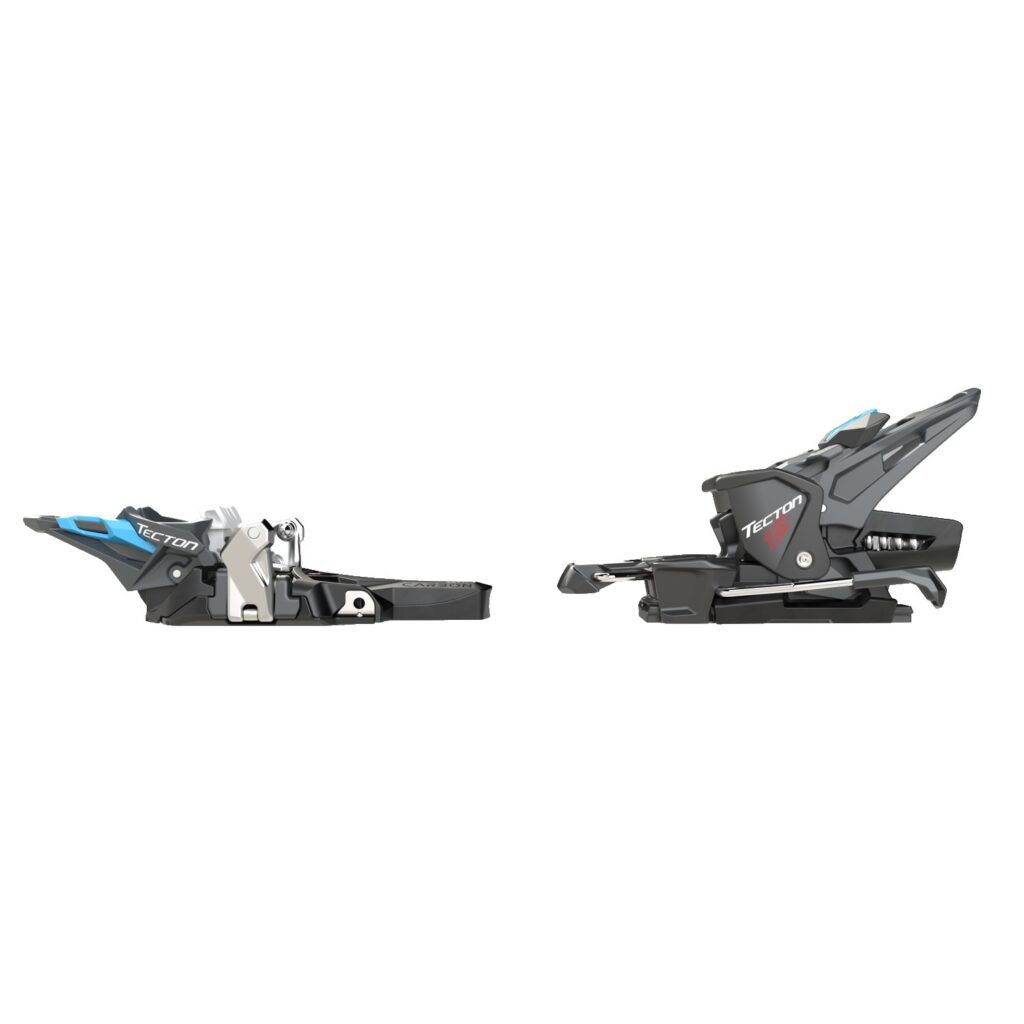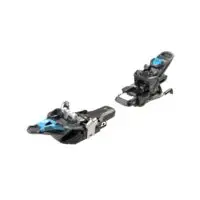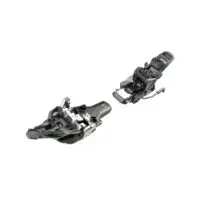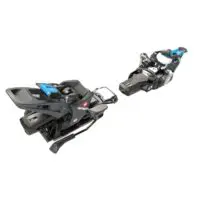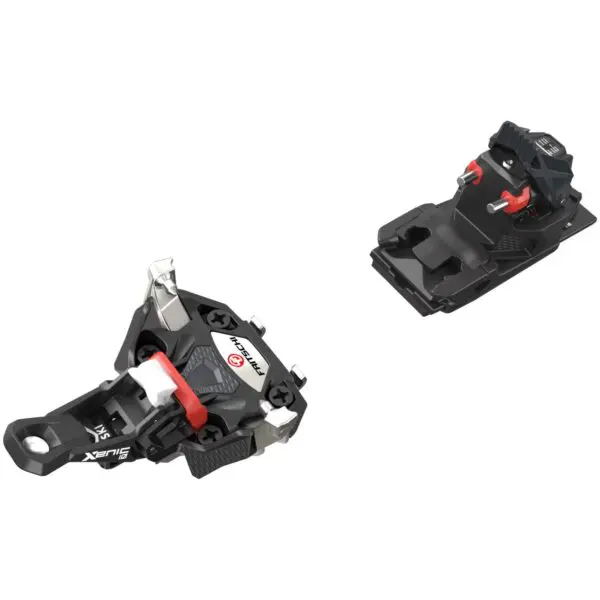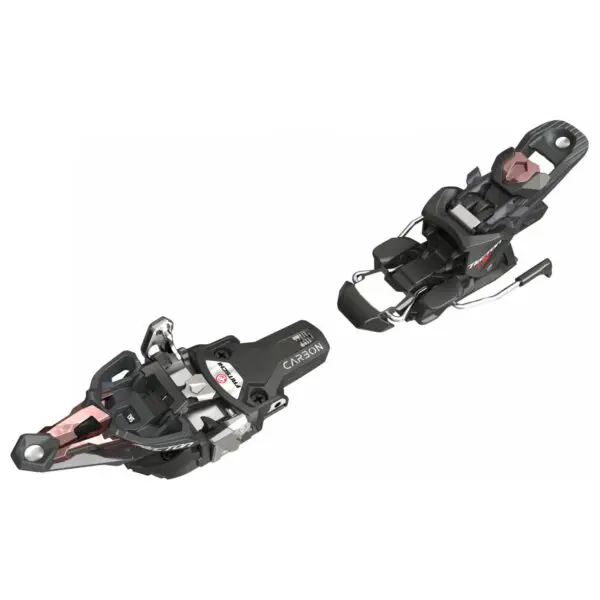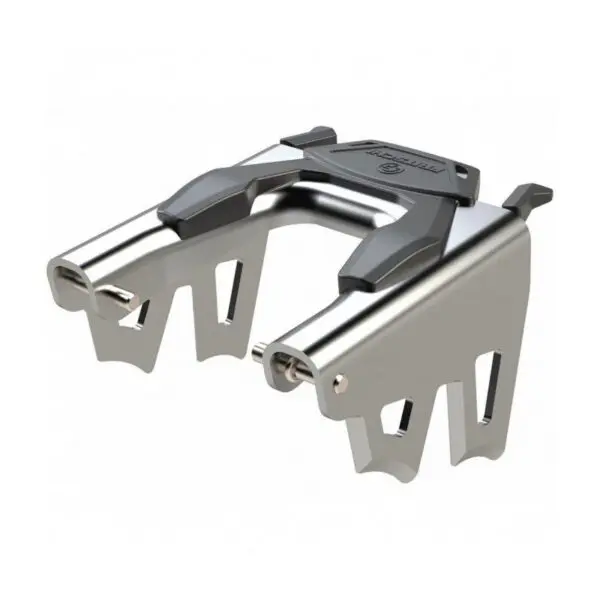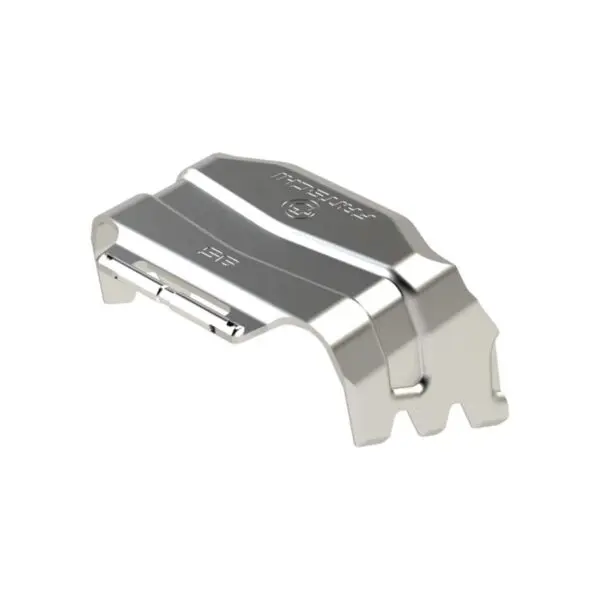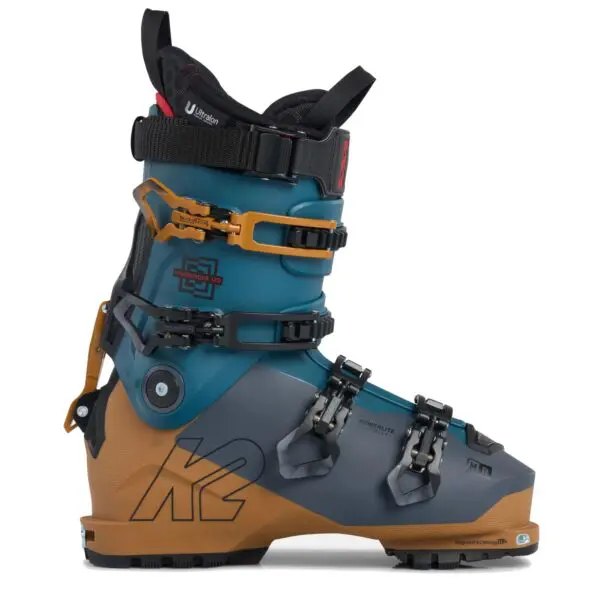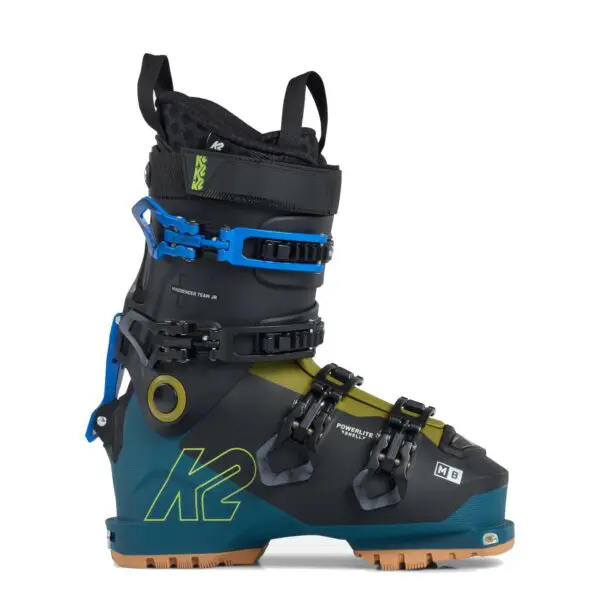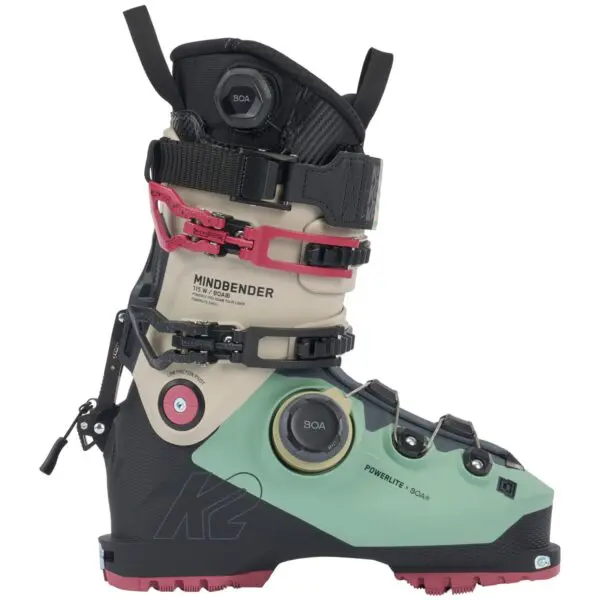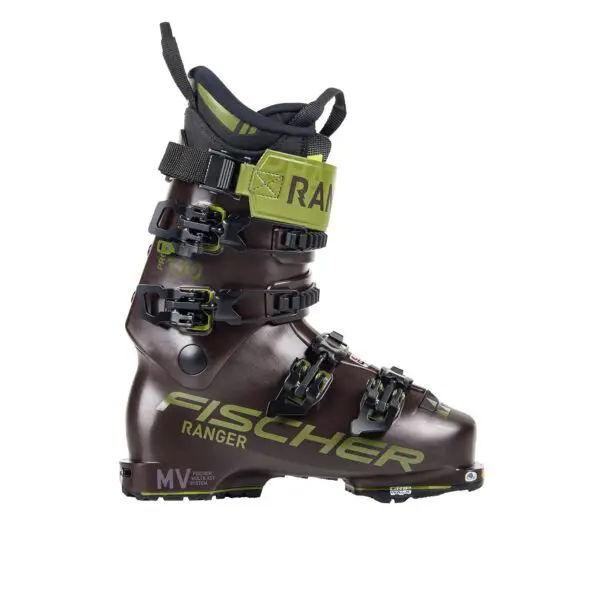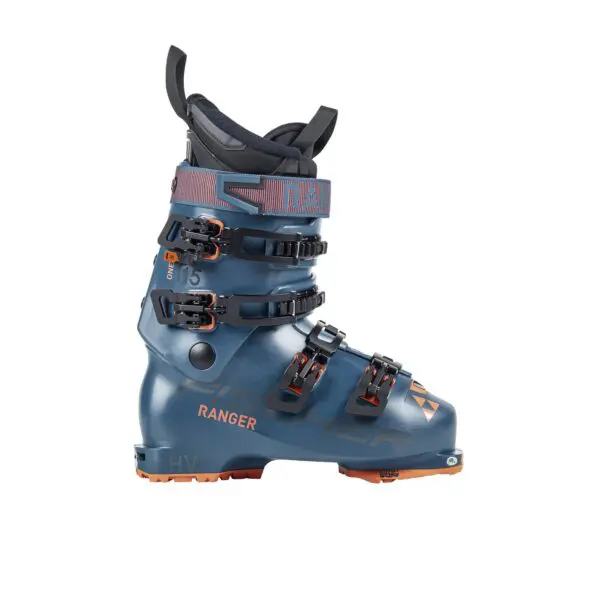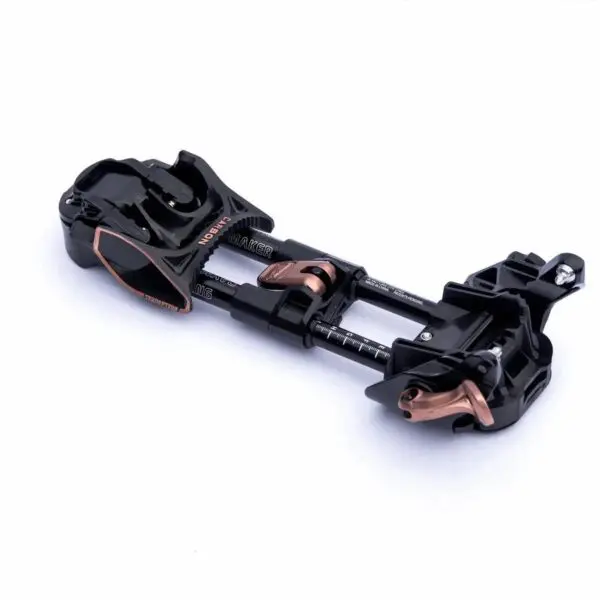Home / Shop / Ski Equipment / Ski Bindings / Fritschi Tecton 13 (2025)
Fritschi Tecton 13 (2025)
$1,399.90
$1,119.90
gnomes V.I.P Club offers members special discounts on current season products. It’s free to join. Login or Register.
- Preorder new season bindings and SAVE 10% Offer ends: 30th April*
- Free shipping on orders over $299*
- Buy any ski + binding and get a FREE mount before shipping!
Description
The Fritschi Tecton 13, one of the safest tech pin bindings on the market is back for another adventure filled season. The easy step-in and the intuitive control provide security, especially in challenging terrain. In the back, where the forces are highest, the Tecton remains as stable and precise as an alpine binding thanks its alpine heel jaw. With its carbon infused plastics front and rear, a durable and stable ride is guaranteed. The low weight and easy step-in along with the same level of safety as alpine bindings means no compromise needs to be given. The practical handling makes every tour a memorable experience to keep you coming back for more and more. This binding not only does it all, but it does it all incredibly well.
Din: 5-13
Safety: DIN Certified
Weight: 1260g/pair
Adjustment Range: 25mm
Stack Height: 24mm
Lateral Toe Elasticity: 13mm
Vertical Heel Elasticity: 9mm
Climbing Aids: 3°, 9° & 13°
Swiss made: All parts are manufactured in Switzerland and assembled into high-quality products in Reichenbach. After the assembly, every binding undergoes a meticulous quality control process including a functional test.
Hold Down System: The heel jaw is pressing the sole of the boot firmly against the heel plate, which is directly connected with the ski, and provides consistent direct traction.
Heel Unit Rail: As an absolute novelty, the rail engages in the back of the boot, secures it in the center and prevents a loss of power.
Non-Turning Heel: Heel unit remains laterally stable. Unlike other pin bindings, the power flow is not interrupted by a rotating movement when the skis turn.
Lateral Release: The long dynamic travel of 13 mm for the toe-cap prevents an unwanted release and cushions any lateral impact.
Front Release: As in alpine bindings, when the DIN value is set, the front release occurs via a heel jaw with a dynamic way of 9 mm. The reset force of the spring prevents a pre-release and compensates the high tensile forces on the leg in a forward fall.
Release Lever: After the release of the heel, the boot tips forward. Due to the pressure of the front of the boot on the Release Lever, the boot is also immediately released by the toe unit.
Emergency Release: The boot is fixed and held in the middle, but the binding will release in response to high active forces. Clamping systems must be blocked while climbing to ensure stability.
Solid Stop: The tip of the boot is optimally positioned by means of a solid stop in front and a positioning guide. Responding to slight pressure, the system closes with the pin levers engaging precisely in the inserts. The sequence of movements is comparable with that of an alpine binding.
Easy: Switching from downhill to uphill mode and vice versa is very simple without having to step out of the binding. The three ergonomically walk mode levels can also be changed in no time with a pole.
Related Gear
We are a team of passionate skiers, our lives are entangled in a world of snow, mountains & ski paraphernalia. Take a look at how we can help you.
-

Fritschi Xenic 10 (2025)
$999.90VIP: $949.90 -

Fritschi Tecton (2026)
$1,499.90VIP: $1,424.90 -

Fritschi Tecton / Vipec Crampon
$229.90VIP: $218.90 -

Fritschi Xenic Crampon
$159.90VIP: $151.90 -
Sale!

K2 Mindbender 120 (2023)
$1,199.90
$959.90Save 20% -
Sale!

K2 Mindbender Team JR (2023)
$799.90
$639.90Save 20% -
Sale!

K2 Mindbender 130 BOA (2024)
$1,699.90
$1,359.90Save 20% -
Sale!

K2 Mindbender 115 BOA W (2024)
$1,559.90
$1,247.90Save 20% -
Sale!

Fischer Ranger 105 W Walk DYN (2024)
$1,199.90
$959.90Save 20% -
Sale!

Fischer Ranger 130 Pro GW DYN (2024)
$1,499.90
$1,199.90Save 20% -
Sale!

Fischer Ranger One 115 GW DYN (2024)
$1,249.90
$999.90Save 20% -

Daymaker Tekdapters
$599.90
Ski Binding buying guide
Often overlooked, ski bindings are easily one of the most important pieces in your ski setup. From safety to performance, the right binding can make a huge difference.
There are a few different types of bindings that all serve separate purposes. It is important to take into consideration where you spend the most time on the mountain and how aggressively you will be skiing.
Downhill / Alpine
Alpine bindings constitute the largest majority of the market. Since these bindings are primarily focused on the retention/release in regards to the ski boot, they have the highest amounts of elasticity which guarantees the best release possible. When you’re looking at alpine bindings, it may be hard to tell what the difference is and why you would splash out a bit more for one versus the next. Here’s a few of the major differences:
- Materials: One of the more noticeable things that change between bindings. Less-expensive bindings are often made with durable plastic which keeps them lightweight. This is great for a more relaxed or lighter skier, but might not be durable enough for someone bigger or more aggressive. As you jump into some of the higher-end bindings, many of them are reinforced with carbon, magnesium, aluminium, and even steel in some cases. This gives them a longer life even when they take a beating often.
- Elasticity: Maintains the fine line between pre-releasing and releasing when you need to. The more elasticity a binding has, the better it’s ability to release at the exact right moment. This is very important in disciplines such as freeride, freestyle, and race where large amounts of force are exerted into the binding regularly.
- Release mechanisms: Vary slightly from binding to binding. Some bindings have added forms of release such as an upward release in the toe or rotating heel units. These added features ensure the smoothest natural release in any situation.
Sole norm compatibility – a very important thing to keep in mind when buying a binding. Most recent alpine bindings can take a variety of sole norms including Alpine, AT, WTR, and Gripwalk. However, some can only take one or two of these. Check with us if you’re unsure on what your boot is compatible with.
Touring
When choosing an touring binding the first thing to think about is what your ratio of touring to resort skiing will be. While a lightweight pin binding will be great for a long tour, it won’t always hold up to the rigors of constant laps at the resort. Likewise a frame binding will provide a very solid platform to ski on and a great reliable release, but it will be a lot of extra work on day long and multi-day tours. Finding the balance is key.
- Pin tech: These bindings are the lightest options and typically have the easiest touring functions to use. They usually have a simple switch between touring and skiing, and they all have climbing aids for steeper terrain. They have a simple point release in the toe and usually a vertical and lateral release in the heel. Some newer options have an alpine style heel peice for a more consistent release out of the heel, and some even have a lateral release out of the toe which is a major aid in knee injury prevention. Pin tech bindings should be primarily reserved for touring use and time used on the resort should be limited.
- Frame: frame bindings provide all the safety and durability of an alpine binding, but with the added capability to tour. These are a great option for people who ski primarily inbounds but may do a few tours a year as well. They are also great if you are on a budget.
- Crossover: This has just started to become an important sector in the alpine touring category. These bindings have the ability to be converted between pin binding and alpine binding styles. This gives the ease of touring up on a tech binding while giving you the safety characteristics of an alpine binding. These are heavier than your average pin binding, but have fairly significant weight savings over a frame binding.
Every ski binding comes with a different range of DIN settings. Often times you might be looking at two bindings that are identical besides different DIN ranges. What do you choose? When selecting a binding it is important to make sure the range provided will suit the DIN setting that you require. It is also important to make sure you are well within the range rather than sitting right at the minimum or maximum settings. We can help you out with figuring out where you fall in this range if you are unsure.
Make sure that any adjustments to ski bindings (even slight) are done by a certified ski technician. Ski bindings are your main safety equipment on your setup and even the smallest incorrect adjustment can result in a preventable injury.
Choosing the right width brake of your binding ensures that the brakes won’t overhang, drag, or get caught. You’ll want to choose the brake that is equal to or slightly wider than the ski itself. If you’re unsure about what size you’ll need give us a shout!
There are five main types of bindings which can safely take different types of ski boot soles. Below is a chart of the binding types vs the sole types and what is and isn’t compatible.

* Boot needs tech fittings to be fully compatible
